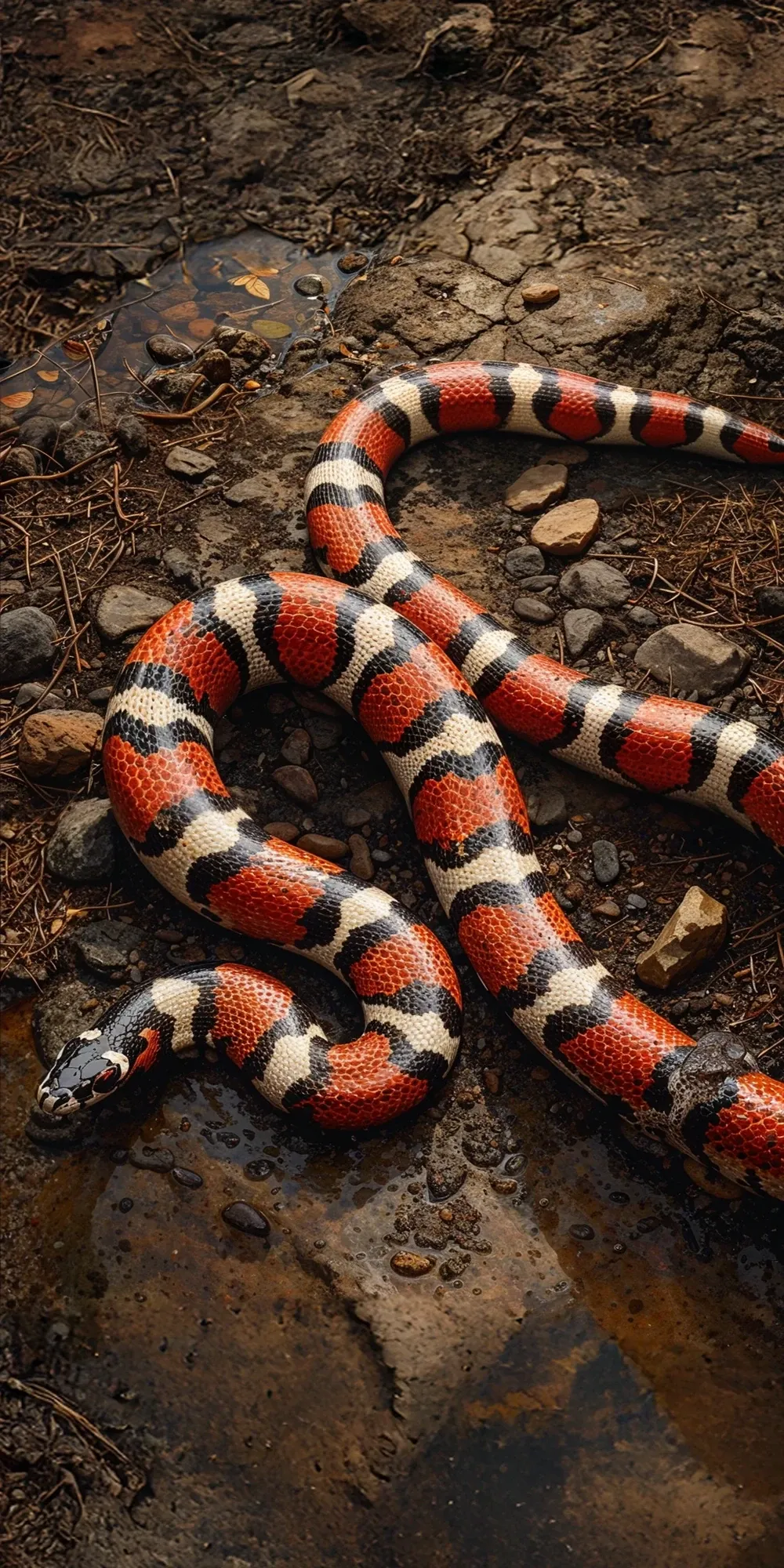The Milk Snake
The Milk Snake is a non-venomous snake species found in North and Central America, known for its striking red, black, and yellow bands. They can grow up to 3-4 feet in length and are often mistaken for the venomous Coral Snake due to their similar coloration. Milk Snakes are nocturnal hunters and primarily feed on small rodents.

| Milk Snake | |
|---|---|
| Size | Up to 4 feet (1.2 meters) |
| Weight | 4-6 ounces (113-170 grams) |
| Speed | 12-15mph (19-24km/h) |
| Key Strength | Agility |
| Biggest Weakness | Lack of venom |
| Scientific Name | Lampropeltis triangulum |
| Family | Colubridae |
| Habitat | Woodlands, grasslands, farmlands |
| Geography | North and South America |
| Diet | Small mammals, eggs, other reptiles |
| Lifespan | 10 years - 20 years |

The Milk Snake
The Milk Snake is a non-venomous snake species found in North and Central America, known for its striking red, black, and yellow bands. They can grow up to 3-4 feet in length and are often mistaken for the venomous Coral Snake due to their similar coloration. Milk Snakes are nocturnal hunters and primarily feed on small rodents.
Fun Fact: Milk Snakes are known to mimic the coloration of Coral Snakes as a defense mechanism against predators, fooling them into thinking they are venomous.
| Milk Snake | |
|---|---|
| Size | Up to 4 feet (1.2 meters) |
| Weight | 4-6 ounces (113-170 grams) |
| Speed | 12-15mph (19-24km/h) |
| Key Strength | Agility |
| Biggest Weakness | Lack of venom |
| Scientific Name | Lampropeltis triangulum |
| Family | Colubridae |
| Habitat | Woodlands, grasslands, farmlands |
| Geography | North and South America |
| Diet | Small mammals, eggs, other reptiles |
| Lifespan | 10 years - 20 years |
Milk Snake Matchups
We use AI to simulate matchups between the Milk Snake and other animals. Our simulation considers size, strength, and natural predatory behaviors to determine the most likely outcome.
Milk Snake: Diet, Predators, Aggression, and Defensive Behaviors
What do Milk Snakes eat?
Milk Snakes are carnivorous and primarily feed on small mammals such as rodents, birds, and eggs. They are also known to consume reptiles, amphibians, and insects. Milk Snakes are constrictors, meaning they will subdue their prey by coiling around it and squeezing until it suffocates.
Do Milk Snakes have any predators?
Yes, Milk Snakes have predators in the wild. Some of their predators include birds of prey, larger snakes, mammals such as raccoons and foxes, and even some species of fish. In order to avoid being preyed upon, Milk Snakes use their camouflage abilities to blend into their surroundings and remain hidden.
Are Milk Snakes aggressive?
Milk Snakes are generally docile and non-aggressive towards humans. They may exhibit defensive behaviors if they feel threatened, such as hissing, vibrating their tail, or striking. However, with proper handling and care, Milk Snakes can become accustomed to human interaction and can be quite tame.
Do Milk Snakes fight?
Milk Snakes may engage in combat with other snakes, particularly when competing for territory or mating partners. During combat, two Milk Snakes will entwine their bodies and attempt to overpower each other by pushing and coiling. The dominant snake will typically drive off the other individual.
How do Milk Snakes defend themselves?
When faced with a potential threat, Milk Snakes have several defense mechanisms to protect themselves. They may mimic the appearance of venomous snakes by flattening their heads, hissing, and rattling their tail. Additionally, they may release a foul-smelling musk or excrete feces in order to deter predators. If these tactics fail, Milk Snakes will resort to biting as a last resort.
What is the biggest weakness of Milk Snakes in a fight?
One potential weakness of Milk Snakes in a fight is their lack of venom. Unlike some snakes that possess venom to subdue their prey or defend themselves, Milk Snakes rely solely on constriction and non-venomous bites. This can put them at a disadvantage when facing predators with venomous capabilities.
Fun Fact: Despite their name, Milk Snakes do not actually consume milk, but are named for the false belief that they would sneak into barns to suck on cow udders.
Fun Fact: Milk Snakes are known for their docile nature and are popular in the pet trade, making them one of the most commonly kept pet snake species.










